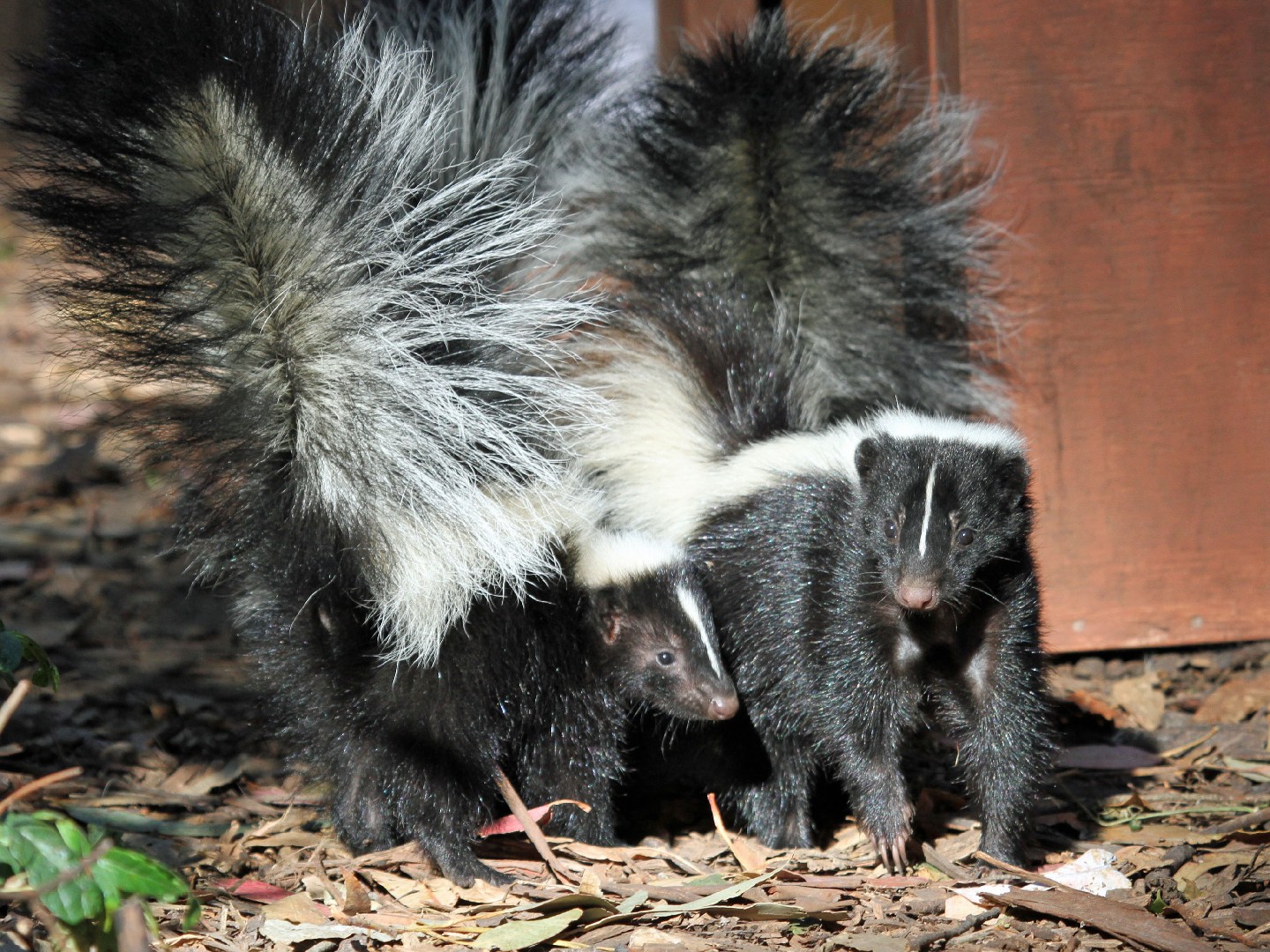Striped skunk
A species of Hooded skunks, Also known as Hudsonian skunk, Black-tailed skunk, Alaska sable, Eastern skunk Scientific name : Mephitis mephitis Genus : Hooded skunks
Striped skunk, A species of Hooded skunks
Also known as:
Hudsonian skunk, Black-tailed skunk, Alaska sable, Eastern skunk
Scientific name: Mephitis mephitis
Genus: Hooded skunks
Content
Description General Info
 Photo By Greg Schechter , used under CC-BY-2.0 /Cropped and compressed from original
Photo By Greg Schechter , used under CC-BY-2.0 /Cropped and compressed from original Description
The striped skunk is a stoutly-built, short-limbed animal with a small, conical head and a long, heavily furred tail. Adult males are 10% larger than females, with both sexes measuring between 52–77 cm in total body length and usually weighing 1.8–4.5 kg (4.0–9.9 lb), though some may weigh 5.5 kg (12 lb). The feet are plantigrade with bare soles, and are not as broad or flat as those of hog-nosed skunks. The forefeet are armed with five long, curved claws adapted for digging, while those on the hind feet are shorter and straighter. The color patterns of the fur vary greatly, but generally consist of a black base with a white stripe extending from the head which divides along the shoulders, continuing along the flanks to the rump and tail. Some specimens have a white patch on the chest, while others bear white stripes on the outer surface of the front limbs. Brown or cream-colored mutations occasionally occur. Like all skunks, the striped skunk possesses two highly developed scent glands, one on each side of the anus, containing about 15 milliliters of musk each. This oily, yellow-colored musk consists of a mixture of powerfully odorous thiols (sulfur analogues of alcohols, in older sources called "mercaptans"), which can be sprayed at a distance of several meters. The odor of this musk was likened by Ernest Thompson Seton to a mixture of perfume musk, essence of garlic, burning sulfur and sewer gas "magnified a thousand times", though Clinton Hart Merriam claimed that it isn't "one tenth" as offensive as that produced by minks and weasels. 
General Info
Lifespan
4-6 years
Diet
Striped skunk exhibits an omnivorous feeding behavior, having a diet mainly composed of insects, which they source using their sharp claws and keen sense of smell. Other food categories include small mammals, birds, fish, amphibians, fruits and plants. These creatures are especially fond of grubs, honeybees, and berries.
Appearance
The striped skunk has a moderate body size, slightly elongated shape, and short, dense fur. Its coat exhibits distinctive black and white striping, most notably a white line splitting its face and two white stripes down its back. Its bushy tail, often raised in display, is similarly marked. No noticeable gender differences exist; however, juveniles' color patterns may be less distinct than adults'.
Behavior
Striped skunk is nocturnal, using its acute sense of smell to locate food under cover of darkness. Though generally solitary, it displays complex social behaviors during mating season. Interestingly, it employs a potent spray as a defensive mechanism against threats, showcasing its unique strategy for deterring predators.
Population
Stable
Scientific Classification
Phylum
Chordates Class
Mammals Order
Carnivores Family
Skunks and stink badgers Genus
Hooded skunks Species
Striped skunk